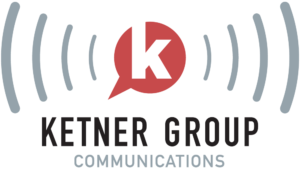I’m on the PRSA Austin Chapter board and gladly volunteered to serve on the planning committee for the PRSA 2013 Southwest District Conference, which was June 5-7. I had an exciting job as the Special Events Committee Chair, which means that I got to plan the social events. What conference goes without networking and happy hours?
And what networking happy hour goes without a life-size poster board of John Wayne? He went with us everywhere!
Here’s a small group of us keeping it strictly business, of course, at Lustre Pearl during our Rainey Street Pub Crawl. That’s me in the cowgirl hat and glow sticks (yep, glow sticks).
To get back to the REAL reason PR pros from Texas, Oklahoma, Louisiana, New Mexico and more gathered in the capital city of Texas, we were there to learn how to “Keep PR Weird,” which was the official conference slogan. Not only did David Lieber, Watchdog Investigative Columnist at Dallas Morning News, say that #KeepPRWeird was the best conference slogan he’s seen in 20 years, it was trending locally for both Twitter and Instagram (thanks to our Pub Crawl photo contest), so check out the conversations!
If I had to take three lessons home from the conference, it’d be these:
1. Storytelling is everything.
Stories are the reason humankind has some idea of our past. From the beginning of time, humans have been passing on important information through stories–whether it was carvings in a rock, through song or written down. We still share and remember important information through stories, and we’re wired to think that way. David Lieber, the opening keynote speaker, emphasized the importance of companies and brands telling their stories. Each story should have a hero/heroine, and the story should have a beginning, climax and end. Make sure to describe the problem you’re solving and illustrate the challenges that brought you where you are today–it makes your company seem much more human. And people crave that human touch.
2. Measurement of Social Media? Possible!
Angela Jeffrey, APR, Senior Counsel for CARMA International, presented a session titled, “The R Social Media ROI.” This was a really useful session, because all PR people know what a headache it can be to try and measure anything in PR, let alone social media. Angela is a fan of the AMEC Social Media Valid Framework, and if you are unfamiliar with it, you can read up on it at AMEC.org (a very helpful presentation) or take a look at Angela’s PR News article that breaks it down nicely. According to Angela, “The philosophy behind the guidelines states that to truly demonstrate the value of PR, metrics need to be linked to the business objective of the program, and move beyond measuring outputs to measuring outcomes. The Framework helps you identify suitable metrics for PR and social media programs that take you from cursory to meaningful measures that resound with the C-suite and help you refine your programs.”
Angela gave attendees a very specific 8 step process for measuring social media activity:
- Define organizational goals
- Research stakeholders and prioritize
- Set specific objectives for each key stakeholder group
- Set traditional/social media KPIs against each objective
- Choose tools and benchmark (using the AMEC Framework)
- Analyze the results and compare to costs
- Present to management
- Measure continuously and improve performance
3. An organization can survive a crisis through honesty and passion
The closing keynote was awesome. Katherine McLain, VP of Communications at Livestrong Foundation, spoke on how to overcome a crisis situation, especially when your organization relies on donations. Following the investigation into and admittance of Lance Armstrong’s doping use, the Livestrong Foundation took a hit. Ken Berger, President and CEO of Charity Navigator had said, “[They are] not going to be able to survive if the person who is behind the spirit of [the organization] is in trouble. It is just going to devastate them.” Ouch! What Livestrong ultimately did was focus on the positive: They are there to help people through difficult struggles in their lives. People with cancer. People who need the foundation to assist them with their fight. Livestrong developed a hashtag that helped position them above the controversy: #FightWithUs. They also developed videos that illustrated individual peoples’ battles with cancer. They focused on the positive, distanced themselves from the negative and marched on.
If you want to chat more about what I learned at the PRSA Southwest District Conference, hit me up on Twitter! @CaitlinNew















